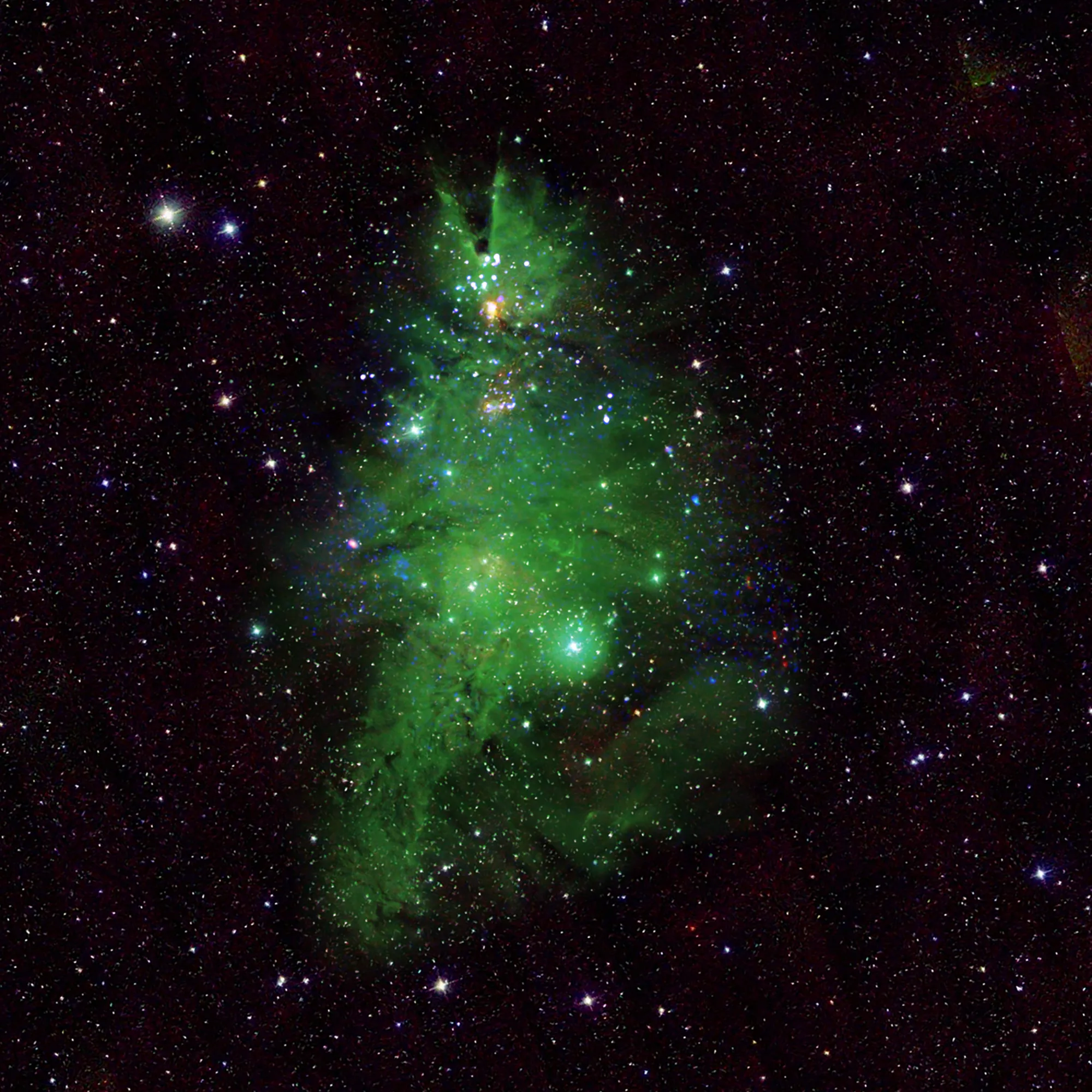News
The holiday is coming: NASA has revealed an incredible galactic Christmas tree
You may not know it, but even the universe has its own Christmas tree. Scientifically, it is known as NGC 2264, located in the constellation of the Unicorn, and is a cluster of young stars. An alternative name for the object is the "Christmas Tree Cluster", so nicknamed for its resemblance to a festive tree decorated with lights.
And NASA showed a new photo of NGC 2264. The rotation of the image and the color illumination chosen for it make its resemblance to a Christmas tree even greater.
The stars in the cluster are quite young - they are between one and five million years old. They are located in our Milky Way galaxy and are about 2500 light years away from Earth. The stars collected in NGC 2264 are both smaller and larger than the Sun. Some of them have a mass of less than 10% of our luminary, and the largest ones exceed it by a factor of seven.
The blue and white lights on the galactic "Christmas tree" are young stars that emit X-rays. They were detected with the help of NASA's Chandra X-ray Observatory. Optical data obtained from the National Science Foundation's 0.9-meter WIYN telescope at Kitt Peak show the gas in the nebula as green. The background for the photo was created by an image of infrared data from the 2MASS (The Two Micron All-Sky Survey) astronomical survey. This image has been rotated clockwise by about 160 degrees from the astronomical standard of North facing upward, so that the top of the tree appears to be closer to the top of the image.
The young stars that make up the NGC 2264 cluster are known to be unstable and produce strong flares in X-rays. Other types of changes from them are observed in other types of radiation.
The scientists warn that the image they published is a montage. It was assembled from available data in such a way as to emphasize the location of the stars visible in X-rays, which would enhance the similarity of the object to a Christmas tree. In fact, the twinkling of the stars is not synchronized.
The oscillations of light from the stars in NGC 2264, observed by different telescopes, are caused by several different processes. Some of them are related to the activity of magnetic fields, including flares similar to those that occur on the Sun, but much more powerful, as well as hot spots and dark areas on the surface of stars that appear and disappear from view as the stars rotate. They can also be caused by changes in the thickness of the gas covering the stars and changes in the amount of matter still falling on the stars from the gas disks around them.
Subscribe to OBOZ.UA channels on Telegram and Viber to keep up with the latest events.




























